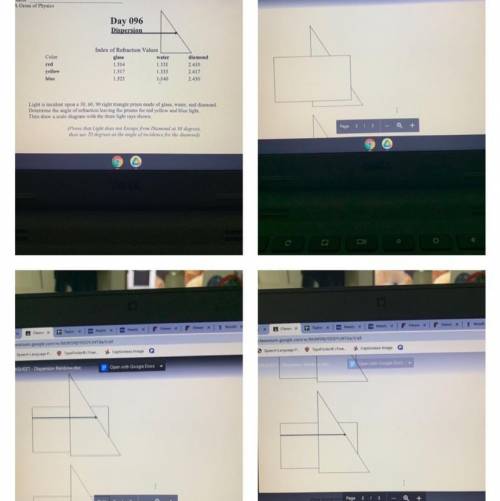Please quick help with physics light problems (WILL GIVE BRAINLIEST!!!)
...


Answers: 1


Other questions on the subject: Physics

Physics, 21.06.2019 20:40, cuavang55
In a steady-flow steam power plant system, two adiabatic high-pressure and low-pressure turbines ane used to generate power. superheated steam enters the high-pressure turbine at 8 mpa and 550°c. the steam expands in the high-pressure turbine to a saturated vapor at 3 mpa. in order to increase the powe generation of the power plant, another steam turbine working in a lower pressure ranges is deployed. the outlet vapor from the first turbine is heated up at a boiler to the temperature of 500 c at the constant pressure of first turbine's outlet (3 mpa). then, the vapor enters the second turbine and produces extra work. the exit conditions of the second turbine are 5o kpa and 90 percent quality. if the total power output of the power plant is 25 mw, determine a) the mass flow rate of the water (kg/s). b) heat transfer rate in the boiler (mw). (30 points) 3 mpa 00 c 8 mpa s0 c high pres turbine low pres boiler turbine 50 kpa 3 mpa 09 saturated vapor t heat engine, shown in the figure, operates between high temperature and low temperature of through a heat 4. a carnot tn and tu respectively. this heat engine receives energy from a heat reservoir at t exchanger where the heat transferred is proportional to the temperature difference as ? = k (z,-7, ). it rejects heat at a given low temperature tl. to design the heat engine for maximum work output, find the high temperature, th, as a function of tes and t. (15 points) qe
Answers: 3

Physics, 21.06.2019 23:00, alanisalvarez2000
Follow these directions and answer the questions. 1. set up the ripple tank as in previous investigations. 2. bend the rubber tube to form a "concave mirror" and place in the ripple tank. the water level must be below the top of the hose. 3. generate a few straight pulses with the dowel and observe the reflected waves. do the waves focus (come together) upon reflection? can you locate the place where the waves meet? 4. touch the water surface where the waves converged. what happens to the reflected wave? 5. move your finger twice that distance from the hose (2f = c of c, center of the curvature) and touch the water again. does the image (the reflected wave) appear in the same location (c of c)? you may have to experiment before you find the exact location. sometimes it is hard to visualize with the ripple tank because the waves move so quickly. likewise, it is impossible to "see" light waves because they have such small wavelengths and move at the speed of light. however, both are examples of transverse waves and behave in the same way when a parallel wave fronts hit a curved surface.
Answers: 1

Physics, 22.06.2019 18:20, tylersabin72
Object a has a length of 3 cm, a width of 2 cm, and a height of 4 cm. object b is dropped into a graduated cylinder. it displaces 19 ml of water. the volume of object a is: a: greater than the volume of object b b: less than the volume of object b c: equal to the volume of object b
Answers: 2

Physics, 22.06.2019 18:40, meganwintergirl
Which body is in equilibrium? (1) a satellite orbiting earth in a circular orbit (2) a ball falling freely toward the surface of earth (3) a car moving with a constant speed along a straight, level road (4) a projectile at the highest point in its trajectory
Answers: 2
You know the right answer?
Questions in other subjects:

Biology, 01.08.2019 12:00

Biology, 01.08.2019 12:00








Social Studies, 01.08.2019 12:00




